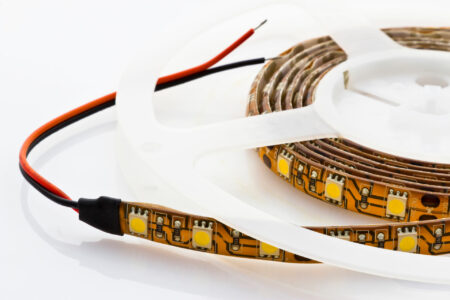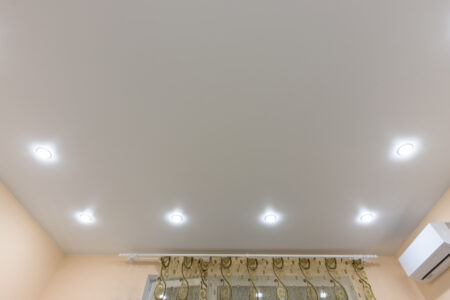Have you noticed that some dimmer switches are called two-way? This begs the question; what’s a two-way dimmer switch? How does it differ from other types of dimmer switches? And why would you want one? Read on for your answers!
What Is a 2-Way Dimmer Switch?
Let’s start from the beginning. A dimmer switch is a device that’s attached to a light fixture and is used to control the brightness of the light.
You can either decrease or increase the brightness of the light output by altering the voltage waveform delivered to the bulb.
A dimmer switch is compatible with many common fixtures and may be used to instantly enhance the atmosphere of a space.
A two-way dimmer switch, on the other hand, allows you to control your lights from two different locations. But how does it work?
Well, when you turn one of these switches on or off, this action sends an electrical signal through wires in your walls and ceiling fixtures. This then turns on or off the light bulb(s) attached at each end of the wire path.
What Is the Difference Between Single-Pole and 2-Way Dimmer Switches?
The most widely accessible and used electrical switches in most households are one-way or single-pole switches. But what exactly is the difference between single pole and two-way switches? Let’s find out!
Number of Contacts
The main difference between a single pole and a two-way switch is the number of contacts each one has. A single pole switch has two contacts, whereas a two-way switch has three contacts.
To make matters easier, you can think of a two-way switch as a combination of two one-way switches.
Defined State
Another key distinction between single-pole and two-way switches is their defined states. For example, you’ll typically find ON and OFF states in a one-way switch.
This means you’ll also find any type of marking, such as a dot or any other indicator for ON and OFF settings.
A two-way switch, on the other hand, doesn’t have an ON/OFF indication. This is because a two-way can’t be in a constant ON or OFF state. After all, its state can change depending on where the other two-way switch is.
What Are the Advantages of a 2-Way Dimmer Switch?
The benefits of going with a two-way dimmer switch are many. If you’re contemplating whether or not to install two-way dimmer switches in your home, take a look at these pros below.
Comfort
Two-way dimmer switches allow you to control your lights from more than one place. For example, if you want to control the lights in your living room from your kitchen with one single light dimmer switch, a two-way dimmer is ideal for that.
Or perhaps your bedroom and bathroom are located on opposite ends of your house but share an electrical system.
You can use a pair of two-way dimmers at each end of the house. That way, when one person turns off their lights, they also turn off their counterpart’s (or vice versa).
To put it another way, you don’t have to turn both switches on for the light to turn on. You also don’t have to go up and down a dark staircase or avoid obstacles in a pitch-black room to turn on the light.
Sustainability
Another advantage to two-way dimmer switches is that they allow you to completely adjust the intensity of light in a specific area. For instance, you may lower the light brightness to make the light bulbs live longer.
This means that you won’t need to change the bulbs as frequently. Dimmer switches can therefore reduce the cost of changing the bulbs and help you save on your electricity bills.
Flexibility
Last but not least, you can install two-way dimmers in any area of your home, including the kitchen, bedroom, bathroom, dining room, living room, and more.
You can also use them with multiple fixture types, such as ceiling lighting, lamps, track lighting, and even lighting beneath cupboards or wall sconces.
Can You Dim a Light From 2 Different Switches?
Typically, it’s not advisable to dim a light using two different switches. This is because it would interfere with the wiring and cause a problem in the circuitry.
You may, however, configure customized two-way dimmers with a primary and backup switch. Let’s elaborate on that.
The dimmers in various areas throughout your home are controlled by a primary and standby switch. As a one-way circuit, the primary may only be activated via a standby switch. Using a single primary control, you may set up several standby switches across your home.
It’s worth mentioning that this may come with a higher price tag than standard dimmers. This is because primary and standby switches use digital mechanisms. Some of these guys even come with remote controls!






